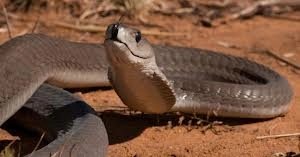News And PoliticsCommunications And EntertainmentSports And FitnessHealth And LifestyleOthersGeneralWorldnewsBusiness And MoneyNigerianewsRelationship And MarriageStories And PoemsArts And EducationScience And TechnologyCelebrityEntertainmentMotivationalsReligion And PrinciplesNewsFood And KitchenHealthPersonal Care And BeautyBusinessFamily And HolidaysStoriesIT And Computer ScienceSportsRelationshipsLawLifestyleComedyReligionLifetipsEducationMotivationAgriculturePoliticsAnnouncementUSMLE And MedicalsMoneyEngineeringPoemsSocial SciencesHistoryFoodGive AidBeautyMarriageQuestions And AnswersHobbies And HandiworksVehicles And MobilityTechnologyFamilyPrinciplesNatureQuotesFashionAdvertisementChildrenKitchenGive HelpArtsWomenSpiritualityQuestions AnsweredAnimalsHerbal MedicineSciencePersonal CareFitnessTravelSecurityOpinionMedicineHome RemedyMenReviewsHobbiesGiveawayHolidaysUsmleVehiclesHandiworksHalloweenQ&A
Communications And Entertainment
profile/4185IMG_20200805_131859_436.jpg
Trendyify

Being Black Was My Sin Nigerian Lady Narrates How She Couldnt Get Any Other Job In Finland Except Cleaning Jobs For Four And Half Years
~1.9 mins read
A Nigerian lady has narrated how she couldn’t get any other job in Finland except cleaning jobs for four and half years.

@Adexmee who blamed it all on her skin colour, added that she could not also collect samples from patients recruited for her study. She added that she left the country without looking back.
The Nigerian lady tweeted;
I used to live in Finland. If it is not better than I left it. Don’t go there! You deserve better! I did cleaning job for 4.5 years and they won’t give us any other type of jobs! I could not collect samples from patients recruited for my study! Being black was my sin!
If anyone spill any jargons to cajole you to go to Finland, show them my tweet. Let them tell us it is not true. I picked race o. I left and never looked back. Please o, let our hustle shine eye o. One chance abroad dey o. Don’t go and enter one chance o. I did once.
Yes to Norway, you will get jobs in oil and gas. These days oil and gas is no longer booming. I need to check with my folks there for current info. No to Finland. Sweden is in between. I don’t want you to go Israelite waka like I did. I did. The hustle is real
For some of us that went to Finland, we started plotting Japa series 2. Some got free education and Finnish Pali and moved to the UK to work under European Union–United Kingdom free trade agreement. Now that Brexit has happened. I don’t know what will happen to them.

profile/1407tmp-cam-1936261485.jpg
Akbon

Popular Nigerian Nollywood Actress, Rachael Oniga, Is Dead
~3.7 mins read
Also, Punch Newspaper gathered that the son of the deceased actress, Alatunji, reported that the mother died at around 10pm of Friday.
"She passed last night at around 10pm. She had malaria and typhoid". The Punch quotes the son's statement.
The Lagos State chairman of the Actors Guild of Nigeria (AGN), Emeka Rising, also confirmed the news in a telephone interview on Saturday morning.
Premium Times Newspaper quotes Mr Emeka saying: “We just got the news early morning today. We have nothing to say than to give glory to God for a life well spent.I got the news this morning, I have been down and surprised.â€
Rachael Oniga who started her acting career in 1993 was born in 1957. Records have it that the veteran actress was born on 23rd May, 1957, three years before Nigeria's independence.
Rachael Oniga had been featured in many movies since she joined the movie industry in 1993. Her first movie was Blockbuster. The Yoruba-born actress had performed in many movies including the ones in English language and those acted with Yoruba language.
Before she joined the movie industry, Rachael was reportedly working for a European engineering consultancy firm with its regional head office in Nigeria.
profile/7509FB_IMG_16584340855903727.jpg
Victor21

Top Eight Most Aggressive Animals In The World
~8.4 mins read
This article lists animals that have been known to be particularly aggressive toward humans, with aggression being defined as reacting purposefully and violently through biting, stinging, kicking, trampling, goring, or other behavior after what appears to be not a great deal of provocation.
Also, once the aggression starts, it is not easily stopped. The animal’s aggression also depends on their mood, whether they’re well-fed, the time of day, whether they have territory or young to defend, and other factors. Here is a list of 8 of the most aggressive animals in the world:
#8 Aggressive Animal: Barracuda
Barracuda swimming in the ocean. Barracudas are adept hunters with few predators because of their speed and size.
In a contest between sharks and barracudas, even sharks that are fairly aggressive like the Great White, many fisherfolks give the barracuda an edge. Between 20 inches to 6.5 feet long, barracudas are both scavengers and ambush predators. Because of this, they may mistake a swimmer in their midst for a predator who has just had a meal and may be shedding bits of prey.
Barracudas have bad eyesight but are attracted to shiny objects, which they mistake for light glinting off the scales of a fish. They have powerful jaws filled with fangs and can swim in bursts of 25 miles per hour. With this in mind, even an exploratory bite can do damage.
Barracudas are found in subtropical waters around the world and live around coral reefs. They belong to the genus Sphyraena, and there are 28 species. These include the Guinean barracuda, the northern sennet, the Mexican barracuda, the yellowtail barracuda, and the red barracuda.
Barracudas can be found in the New England Aquarium.
#7 Aggressive Animal: Black mamba
Black mamba, Africa‘s most feared snake, is also the world’s fastest snake.
Like most other animals, the black mamba does not seek confrontations with people, but when it is cornered it is notorious for its aggressiveness. It gets its name not so much from the color of its scales, which range from dark brown to gray, but for the color of the inside of its mouth when it gapes in a threat display.
Found in southern Africa and parts of central and east Africa, the black mamba often grows to over 9 feet in length, and snakes that were longer than 14 feet have been described. Only the king cobra is longer when it comes to venomous snakes. When it attacks, the mamba will bite and bite again and again, so the victim might have more than one set of toothmarks. The venom is a neurotoxin, and its effects are felt minutes after it’s delivered. If the person isn’t quickly treated with antivenin, they will die within seven to 15 hours as their cardiovascular system collapses.
The black mamba is found in the Houston and Atlanta zoos, and its conservation status is least concern.
#6 Aggressive Animal: Chimpanzee
An angry chimpanzee. Chimpanzees are enormously strong, estimated to be around four times stronger than a human of a similar size.
One reason that chimpanzees don’t kill or injure more humans than they do is that they are elusive and difficult to find in their natural habitat. Once thought peaceable, it became obvious to researchers such as Jane Goodall that chimps can behave with a nearly humanlike viciousness. In some sense, they lack a theory of mind, which means they can’t understand or empathize with their victims. The horror of chimpanzee attacks on humans is that they are intelligent enough to attack those areas of the human body that humans value, such as the face, the hands, or, in males at least, the genitals. Yet chimps, who are 1.3 to 1.5 times stronger than humans, are animal enough to be relentless.
Chimpanzees have been known to kill and eat human babies, probably mistaking them for their favorite primate prey, colobus monkeys. Chimps also attack people who get them drunk or who they view as rivals. St. James Davis, a former NASCAR driver, was severely mauled by two chimps who became jealous after he’d brought a birthday cake for his former pet chimp Moe and didn’t share any with them. Still, too many people keep chimpanzees as pets or even surrogate children.
Like hippos, chimps are popular at zoos, including the San Diego Zoo. Their conservation status is endangered.
#5 Aggressive Animal: African buffalo
An African buffalo in the Masai Mara, Kenya. African buffalo have a complex social structure based on what scientists call a “dominance hierarchy”.
Unlike the hippopotamus, the African buffalo’s huge, curved horns and robust, muscular body keeps humans from thinking it is cuddly. One of the big five of big game hunters, it has a reputation for both aggressiveness and what seems like vengeance. Only the lion and the biggest crocodiles think of it as potential prey. Unlike its Asian cousin the water buffalo, humans never domesticated the African buffalo.
The African buffalo kills about 200 people a year, though it’s not as aggressive as the hippopotamus. The biggest buffaloes can be from 5.56 to a little over 11 feet long with a 2 to 3-foot long tail and can weigh between 1100 and 2200 pounds. The male’s vicious horns come together to form a boss at the top of its head and sweep down and back to come to very sharp points. It takes eight or nine years for the boss to harden. Cows, which are smaller than bulls, have horns, but they don’t sport the boss.
Zoos that have enough room for this animal include Denver Zoo. Its conservation status is least concern.
#4 Aggressive Animal: Horsefly
The Horsefly is a predator, actively attacking humans and animals.
Like the mosquito, the female horsefly needs a blood meal in order to successfully reproduce. Unlike the female mosquito, the horsefly does not approach its victim tentatively nor is it easily dissuaded. Moreover, its bite is memorably painful. Biologists believe this is because the horsefly evolved to bite animals that couldn’t easily swat it away, so it didn’t bother to evolve an anesthetic in its saliva like the mosquito.
Depending on the species, the horsefly is a medium to large insect between 0.2 and 2.4 inches long. Most are brown, grayish-brown, or black, with huge compound eyes that can be iridescent in life. The horsefly uses its Swiss Army knife-like mouthparts to slice open a wound and enlarge it. It then laps up the blood and adds anticoagulants to keep it from clotting. Because the bite is so painful, the horsefly will be quickly brushed away. In that case, it will either keep trying to come back or find another host. This is how the horsefly spreads diseases and parasites.
#3 Aggressive Animal: Hippopotamus
The common hippopotamus (Hippopotamus amphibius) or hippo at sunset with open jaws. The mighty hippo threatens everyone around him with an open mouth.
People simply can’t believe that hippos are as aggressive as they are. Blubbery, herbivorous, seemingly lethargic, partially aquatic with incredibly cute babies, it is astonishing to learn that hippos kill at least 500 people every year. Found nearly everywhere in sub-Saharan Africa as well as along the Nile River, the hippo can move surprisingly fast on land. A determined hippo can sprint at 19 miles per hour.
Hippopotami belong to the Hippopotamus genus. There are five subspecies:
The pygmy hippopotamus is not a subspecies but belongs to a different genus entirely.
A hippo can grow to between 9.5 to nearly 17 feet long, excluding a tail that’s a bit over a foot in length. They stand from 4 to 5 feet tall at the shoulder and easily weigh over a ton. A big male can weigh over 2 tons, and not only that, males never stop growing during their 50-year lifespan. Their lower incisors and astonishing lower canine teeth also never stop growing, and they have been known to use this impressive weaponry to kill people. People are also overcome and trampled on land. Hippos are also fond of capsizing small boats then attacking the people who fall into the water.
Hippopotami are popular attractions in many zoos around the world, including the Toledo Hippoquarium, which saw the first underwater hippo birth. The San Diego Zoo and the San Antonio Zoo also exhibit hippos. The conservation status of the hippopotamus is vulnerable.
#2 Aggressive Animal: Fire ant
Fire ants live in colonies, which can contain over 200,000 ants. The colony is typically comprised of female worker ants and one queen, who is responsible for laying the eggs.
The fire ant gets the number two spot because it is one of the few animals that attack for what seems like no reason whatsoever. Social insects such as wasps or bees can be expected to defend their colony, but a fire ant that is simply patrolling around will crawl up on a barefoot and sting and bite for what seems like no other reason than the foot is in its way.
While its sting may not be as hideously and lastingly painful as the sting of South America’s bullet ant, the fire ant comes by its name honestly. The pain of its sting feels like being pierced by a red hot needle and lasts for some hours. The sting is followed by a welt, then a bleb that dries out over time if it is left alone. People who are sensitive to the fire ant’s venom, which is made of poisons called solenopsins, can become ill if they are bitten by many fire ants, and some can even go into anaphylactic shock.
Fire ants are not only aggressive toward people but toward other species of ant. It is unusual to find an area where fire ants and other types of ants live harmoniously.
#1 Aggressive Animal: Nile crocodile
A Nile crocodile (Crocodylus niloticus), in the Chobe river, Chobe National Park, Botswana. Crocodiles have the strongest bite of any animal in the world.
The Nile crocodile gets the number one spot because it is the only animal on the list to consider humans a regular part of its diet. It’s just as likely to grab a human that strays too close to the water’s edge as it would a wildebeest. Hundreds of people are killed by the Nile crocodile every year.
This crocodile is found in at least 26 countries in sub-Saharan Africa and lives in fresh or slightly brackish water. The length of a male is between 11.5 and 16 feet, and it can weigh between 500 and 1650 pounds, though there have been cases of crocodiles longer than 20 feet that weigh over a ton. Females are 30 percent smaller than males. The Nile crocodile’s conservation status is least concern.
The Nile crocodile is an ambush predator whose jaws are uniquely powerful and whose teeth are tough and sharp enough to pierce through hide. Because of the unbreakable grip of its jaws, all a Nile crocodile needs to do is drag even a large animal underwater and wait for it to drown before it starts to feed. As its teeth are made for gripping and not chewing, the crocodile goes into what’s called a death roll to tear its prey to pieces, the better to swallow it.
Nile crocodiles can be found in the Bronx Zoo.
Advertisement
Loading...
 Trendyify
Trendyify

 Akbon
Akbon
 Victor21
Victor21